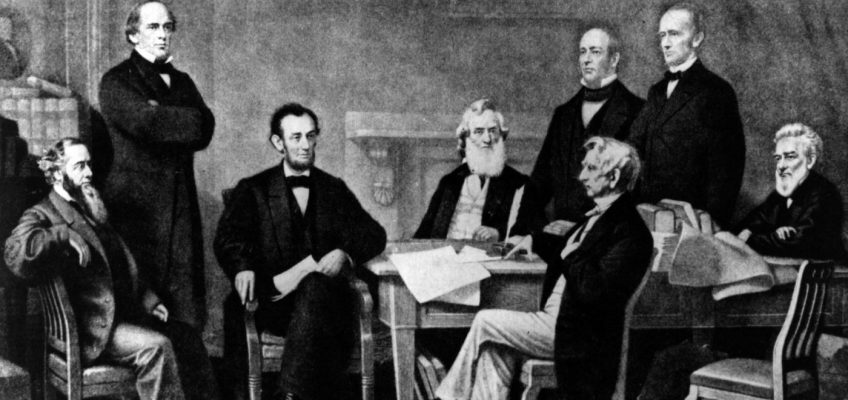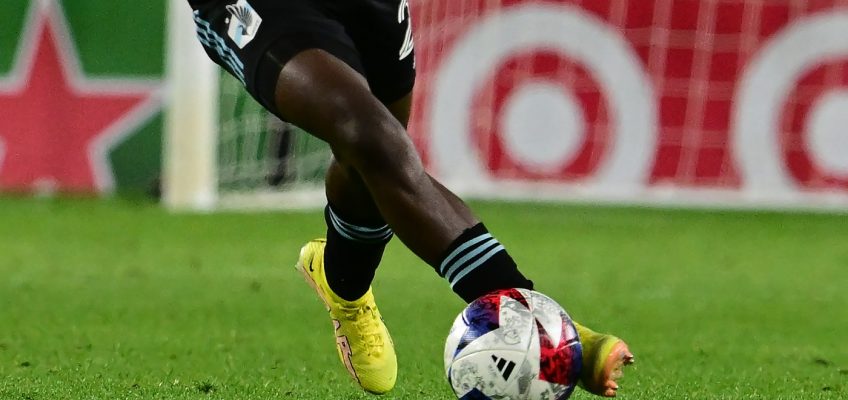On any given day, 130 children come to the Catholic Charities Northside Child Development Center in North Minneapolis. Kim Osborn knows every single one of them.
She really knows them.
She knows that 2-year-old Jamarion has a hard time with goodbyes. She puts a graham cracker in his locker for him to eat when he goes home. It makes him feel better, she says.
She knows that 4-year-old May will not remove her jacket until it is time to go in for breakfast. When that time comes, May and Osborn together put her jacket in her locker.
Kimberly Osborn helps May Clarke-Williams, 4, with her zipper. (John Autey / Pioneer Press)
She knows that 5-year-old Robert does not answer to “Robert” in the morning. “He will tell you who he is in the morning,” she said. “He’s usually some form of Spider-Man. He’ll say, ‘Ms. Kim, I am Miles Morales today’ or ‘Today, I’m Peter Parker, Ms. Kim.’ Or sometimes he wants to be called ‘Danger.’”
For the past 17 years, Osborn, the center’s program director, has made it her mission to know each child under the care of the center’s 20 employees.
On Wednesday, Osborn received the Bishop Joseph M. Sullivan Award from Catholic Charities USA at the organization’s annual convention in Oklahoma City. The award goes to a person in the Catholic Charities network with a distinguished record of dedicated service and leadership for children, youth and families.
Earlier this year, Osborn won the 2024 Director of the Year Award from the Minnesota Association for the Education of Young Children “in recognition of the amazing work she has done for the children, families and early childhood educators in her program.”
For those who know Osborn, the awards were no surprise.
Osborn, who started as a classroom teacher at Northside in 1994, “has tangibly and profoundly changed the lives of thousands of children and their families over the course of her career,” said Kerry Alys Robinson, president and CEO of Catholic Charities USA. “Her work is a tremendous blessing to her community and to the entire Catholic Charities network. She has forged a legacy that all of us should admire and seek to emulate.”
Amanda Luedtke, senior division director of children and family services for Catholic Charities Twin Cities, said Osborn “is deeply engaged with her students and their families” and “has developed a talented team that is committed to supporting children early in their lives, ensuring they are ready for success in school and in life.”
Low-income neighborhood, high-performing kids
Northside, which educates children from 6 weeks to 12 years old, is seen as a “refuge” in a neighborhood that has been historically challenged by marginalization and structural racism, said Keith Kozerski, Catholic Charities’ chief program officer.
“Our kids are statistically subject to one of the worst opportunity gaps in the country. So, to know that these children have someone of Kim’s quality leading their child care center, someone who has been committed to them for almost 30 years, is so meaningful,” Kozerski said.
Northside consistently achieves the “Parent Aware” top 4-star rating from the Minnesota Department of Children, Youth and Families. In 2023, more than 80 percent of children at Northside “met or exceeded expectations” in all development areas as outlined by Teaching Strategies GOLD, the Minnesota Department of Education-approved kindergarten-readiness assessment, according to Osborn.
Northside also has been accredited by the National Association for the Education of Young Children – a process that takes months of planning and preparation to ensure every standard is met. Fewer than 10 percent of all child care centers, preschools and kindergarten programs across the country achieve this recognition. The Northside team secured an average rating of 97 percent, she said.
Kimberly Osborn, program director of Catholic Charities Northside Child Development Center, talks about the challenges and rewards of her job. (John Autey / Pioneer Press)
“The kids here deserve everything we can do for them,” Osborn said. “I’m lucky to be part of a team that works hard every day to provide the best possible care.”
The center serves low-income families who are eligible for state-subsidized child care. Northside also receives support from private scholarships and state funding.
Osborn said she was drawn to work in early childhood education as a way to advocate for women and children. “Once I started working in a community where there’s a lot of generational poverty and families that are marginalized, I could just see the importance of getting the children ready for kindergarten, the early access,” she said. “I ended up here, and I just fell in love with it.”
The children who attend Northside “need a lot of one-on-one time,” Osborn said. “There are kids who have quite a few family members living in their households, and so it’s nice to break those kids off and give them some quiet space and some one-on-one attention.”
That means Marley, 5, who has to come in extra early some days because of her mother’s work schedule, gets to have private time to play with her favorite toy: the pink kinetic sand. Osborn and Marley have made a special container for her morning sand that no one else is allowed to touch.
When Joe, 4, arrives, he has no interest in “morning court time” in the center’s inside play area, but requests that Osborn bring magnetic letters out to him to practice words.
Danielle, 4, always wants to spread her own jelly. “Ms. Kim, remember I like to do it,” she told Osborn the other day.
Control Data legacy
Northside was once owned and operated by Control Data for the company’s employees and employees of other businesses in the community.
“When they were leaving North Minneapolis, they really still wanted it to be a quality, reliable child care center,” Osborn said. “When they were leaving, they still wanted it for the community – for the families, the parents that were working in the community. So Catholic Charities took it over.”
That was in 1986. Osborn joined the center in 1994. She’s been there so long that she is now caring for the children of children she cared for when she started.
It’s not always glamorous, she admits.
Kimberly Osborn helps serve breakfast for preschoolers at the Northside Child Development Center in Minneapolis. (John Autey / Pioneer Press)
“So far today, I’ve made bleach water, sanitized the highchairs and wiped down the counters, and changed two poopy diapers,” she said around 9:30 a.m. one recent morning. “I helped a little person who was very much missing her mom. I just reassured her that her mom was coming back. ‘After snack, she comes back,’ I said. ‘Your job is school right now, and mom’s job is work.’
Osborn, 55, who lives in Balsam Lake, Wis., generally is up by 3:50 a.m. “I like to be here by 6 a.m.,” she said, adding that her one-way drive time is “one hour and six minutes.”
“I like to come in to open,” she said. “I make the coffee. We have a couple different classrooms, and so I’ll just be here if there’s kids that come early. I open the preschool room because right now there’s a real shortage of preschool teachers. Kids start coming at 6 or 6:30.”
A bulletin board near the preschool room features this month’s “Attendance All Stars.”
“We really promote the value of school and education, and attendance is really important,” Osborn said. “We try to start that as young as possible, so we just celebrate everyone who’s made it here every day during the month. Then we do a drawing for a $5 gift card to Walmart. We surveyed the parents, and they said they wanted gift cards to either Walmart or McDonald’s.”
‘Trailblazer,’ longtime St. Paul educator Shirley Kaiser celebrated
Vouchers ease start-up stress for churches seeing demand for more Christian schools
‘Historic’ donation to University of St. Thomas will create scholarship funding for 250 students every year
Ask the Pediatrician: 10 tips to keep children healthy and happy in school
‘What happens three months from now?’ Mental health after Georgia high school shooting
On the other side of the bulletin board is a large indoor playground area with skylights. It’s called the “open court,” Osborn said. “It’s really important because there’s not as much green space in the area for the kids to play in, so it’s nice to have something pretty close and easy for us to use. Some of the playgrounds that are within walking distance, sometimes they’re just overused or just too busy or too grown up, and so they’re not as helpful.”
The open court is the site of Osborn’s favorite Northside tradition: the preschool graduation, where each “graduate” signs a “Letter of Commitment” to their elementary school.
“I was trying to figure out how we could jazz it up, so two years ago, I thought of doing a signing day,” Osborn said. “I love sports as well, so we got each child a shirt with where they’re going to school, like Ascension or Bethune. We call them up, and we put their shirt on them, and then they sit at a big table, and we have them sign a ‘commitment letter.’ They commit to being a good friend, to going to bed on time, to listening to their teachers. I mean, it’s some pretty important stuff that they need to practice every day. The parents really, really, really value their kids, and they want them to be successful, so they are dressed up. It’s a big deal.”
Goes the extra mile
Osborn has always gone “the extra mile” when it comes to serving the Northside kids, said Briana Thompson, 35, who, along with her twin sister, had “Ms. Kim” as her teacher at Northside from the ages of 6 through 12. Now, two of Thompson’s three children are at Northside: Kacyn, 7, and Kera, 6; her oldest daughter, Aavaeh, 16, also attended.
“It’s much more than a job to her,” Thompson said. “That’s why I put my kids there. It feels like a family. She makes you feel welcome. She has a good heart. She’s very fun, very dedicated. She takes the time to not only know the kids but their families, too.”
Northside works with a number of different specialists, including on-site occupational, speech and physical therapists employed by Capernaum Pediatric Therapy. “We give them the space so the kids can get the therapy they need while the parents are working because, really, the ultimate goal is to have the child ready for kindergarten or a plan set in place, right?” Osborn said. “Sometimes there’s not much flexibility in the parents’ work schedule, and so we want the kids to get the appointments, the services that they need.”
Parents tend to be more receptive to their child’s needing therapy if the subject is first broached by a Northside teacher, Osborn said.
“It helps just because there’s a relationship that we have with the parents,” she said. “If you’re hearing for the first time that your child might need a therapeutic service, it’s kind of overwhelming. It feels different coming from myself or Ms. Anne (Parrett), you know, or a teacher who says, ‘Hey, there’s a worry. Let’s try to figure it out together.”
The care and consistency of the staff at Northside helped the community get through the aftermath of the murder of George Floyd, Osborn said.
“People were rioting and having fires … just two, three blocks away,” she said. “We had a parent meeting just to say, ‘How should we be responding? How should we be talking to the kids? What do you want us to be doing?’”
Parents told Northside staff that they wanted the center to remain open so their children could come to the center “and just have a normal day,” she said. “Basically, they were just really wanting quality, reliable, consistent care.”
Remaining open during the COVID-19 pandemic “was probably one of the hardest experiences, especially for families where there’s not a lot of resources,” she said. “There’s a lot of generational worries for their families, and most of all, the families really are essential workers. They’re medical assistants; they’re bank tellers; they work in grocery stores, gas stations – and so they had to work every day. Their kids, you know, came here, but it was a lot of isolation, and I think that was pretty hard sometimes for families with not a lot of resources.”
‘Power of home’
Osborn holds Ja’Zyah Johnson-Smith, 3, who just arrived for the day. (John Autey / Pioneer Press)
Osborn grew up in St. Croix Falls, Wis., and graduated in 1992 from St. Cloud State University with a bachelor’s degree in applied psychology. She and her husband, Richard, have five children and three grandchildren.
She believes play is essential to a child’s development because it contributes to their cognitive, physical, social and emotional well-being. “Using your imagination, or being able to just get your hands dirty, is so valuable,” she said. “Parallel play, where they’re sitting there playing with their friends and being able to coordinate and figure out together the problem. Maybe it’s the castle. Everyone wants to be the king, right? Somebody’s got to be the prince or something. You know, it’s just really trying to navigate some of those important life lessons of sharing and taking turns and not always getting your way. It’s hard.”
3 plead guilty in cases tied to $250 million Feeding Our Future fraud scheme
Plane pull competition in South St. Paul on Saturday aims to raise critical funds for veterans
Celebrate Hispanic Heritage month with these Twin Cities events
Free farmers’ market at Allianz Field Friday
After record-breaking attendance in 2023, Summit Hill House Tour is back this weekend
Some children, who live in families with busy households, “don’t want to play with anybody,” Osborn said. “They just really would like to sit in the quiet space and, you know, build or look at books or just do some sensory items,” she said. “We just have to meet them where they are at.”
There’s a quotation from Martin Luther King Jr. on the wall of Osborn’s office at Northside. It reads: “Life’s most persistent and urgent question is, ‘What are you doing for others?’”
“I’ve been thinking about the ‘power of home,’ and I really was trying to figure out where Northside fits into ‘the power of home,’ and what does that look like from Northside Child Development Center’s lens?” she said. “I’ve had the opportunity to witness what that looks like for the past 30 years. It’s a sense of community, a sense of belonging. … This feels like home. One former student told me, ‘I have had over 10 addresses, and the only address I remember is 1000 Plymouth Avenue North.’ That is the power of home.”




